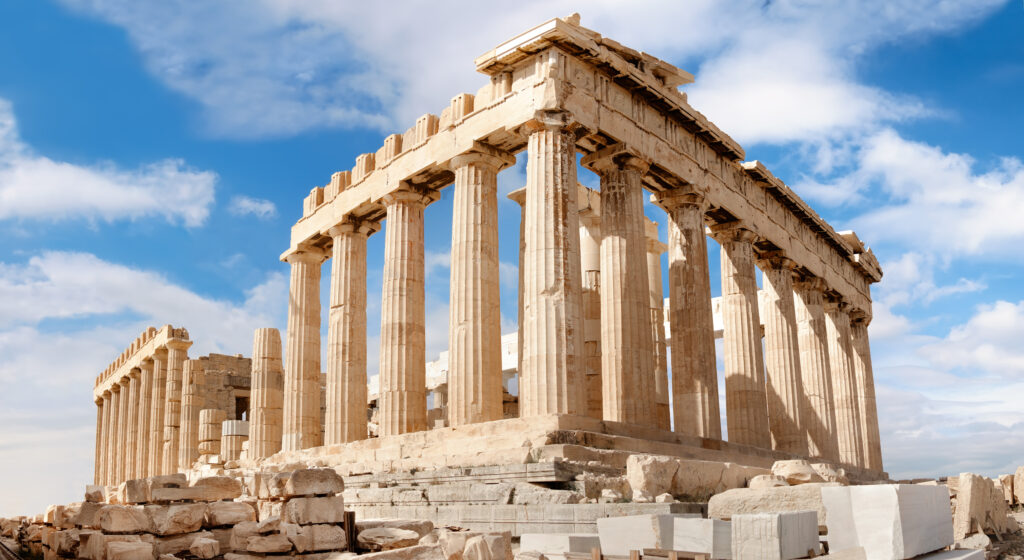When planning a trip to Athens, two names inevitably come up: the Acropolis and the Parthenon. These landmarks are often mentioned together, and many people even use the terms interchangeably. However, while they are related, they are not the same. Understanding the difference between the Acropolis vs Parthenon can enrich your visit and give you a deeper appreciation for the history and architecture of ancient Greece. This guide breaks down the distinctions, historical context, and cultural significance of both sites, making it easier to navigate their meanings and importance.
Defining the Acropolis vs Parthenon
The term “Acropolis” comes from the Greek words “akron” (highest point) and “polis” (city). So, the Acropolis literally means “high city,” a term used to describe a fortified part of an ancient Greek city, typically built on a hill for defensive purposes. Almost every ancient Greek city had an acropolis, but the most famous by far is the Acropolis of Athens.
The Acropolis of Athens is a limestone outcrop rising 150 meters above the city. It served as a religious and ceremonial center, especially during the height of Athenian power in the 5th century BCE. The site includes several buildings and structures, such as the Erechtheion, the Temple of Athena Nike, and the Propylaea. But the crown jewel of the Acropolis is undoubtedly the Parthenon.
The Parthenon is a temple that sits atop the Acropolis. It was built between 447 and 432 BCE and was dedicated to Athena Parthenos, the patron goddess of Athens. The Parthenon is a masterpiece of Doric architecture and a symbol of classical Greek civilization. So when people debate the Acropolis vs Parthenon, they are often unaware that the Parthenon is just one—albeit the most iconic—part of the larger Acropolis complex.
Historical Background of the Acropolis
The Acropolis of Athens has a long and varied history. The earliest fortifications on the site date back to the Mycenaean period around the 13th century BCE. However, most of the monumental buildings we see today were constructed during the Golden Age of Athens under the leadership of Pericles.
After the Persian Wars, Athens embarked on a grand building project to assert its dominance and cultural superiority. This is when the Parthenon and other major structures were built. These buildings not only honored the gods but also showcased Athenian wealth, artistic innovation, and political power.
Over the centuries, the Acropolis served many roles. It was a religious center, a treasury, and even a stronghold during times of war. In later eras, the site saw various transformations. The Parthenon became a Christian church in the Byzantine period, a mosque during the Ottoman era, and finally a major archaeological site in modern Greece. The Acropolis was declared a UNESCO World Heritage Site in 1987.
The Architectural Marvel of the Parthenon
The Parthenon stands as a testament to the ingenuity of ancient Greek architecture. Designed by architects Iktinos and Kallikrates and sculpted under the direction of Phidias, the temple combines aesthetic beauty with mathematical precision. It uses a technique called entasis, where columns are slightly curved to correct optical illusions and appear straight to the human eye.
Constructed mainly of Pentelic marble, the Parthenon originally featured 46 outer columns and housed a massive statue of Athena made of gold and ivory. The friezes and metopes depicted mythological scenes, showcasing the artistic and cultural values of ancient Athens. Though partially damaged by war, looting, and pollution, the Parthenon still stands as an enduring symbol of classical antiquity.
While the Acropolis includes multiple structures, the Parthenon draws the most attention because of its grandeur and symbolic power. The debate of Acropolis vs Parthenon often centers around this very distinction: the Acropolis is the stage, and the Parthenon is the star performer.

Visiting the Acropolis vs Parthenon Today
Modern visitors to Athens often ask whether they should visit the Acropolis or the Parthenon, not realizing that one visit covers both. When you buy a ticket to the Acropolis, you gain access to the entire complex, including the Parthenon.
The experience of climbing the rocky hill to reach the Acropolis is as impactful as seeing the monuments themselves. As you walk up, you pass through the Propylaea, an imposing gateway that sets the tone for what lies ahead. Once at the top, the sheer scale and beauty of the Parthenon dominate the view, but it’s worth taking the time to explore the other structures too.
Guided tours are highly recommended, as they provide context and historical details that bring the ruins to life. Audio guides and mobile apps can also enhance your experience. Don’t forget to visit the nearby Acropolis Museum, where many original sculptures and artifacts from the site are housed in a stunning modern space.
Cultural and Symbolic Significance
The Acropolis and Parthenon are more than just historical ruins—they are symbols of Western civilization. The Parthenon, in particular, has become an icon of democracy, art, and architecture. Built during the height of Athens’ power and democratic development, it stands as a tribute to human achievement and cultural expression.
The Acropolis as a whole represents the spiritual and civic heart of ancient Athens. Its elevated position mirrors its elevated status in the minds of the Athenians. It was a place for worship, celebration, and reflection. In comparing the Acropolis vs Parthenon, it’s essential to recognize that one cannot truly exist without the other—they are interlinked both physically and symbolically.
Common Misunderstandings: Acropolis vs Parthenon
One of the most common misunderstandings is using the terms Acropolis and Parthenon interchangeably. While the Parthenon is the most prominent structure on the Acropolis, they are not synonymous. Another point of confusion lies in the purpose of the structures. The Parthenon is a temple, while the Acropolis is the larger sacred complex that includes multiple temples and buildings.
Many also think the Parthenon was solely a place of worship. While it did serve religious functions, it was also a treasury and a political statement. Over time, its role evolved to reflect the changing identity and rulers of Athens.
Conclusion: Understanding Acropolis vs Parthenon
In the debate of Acropolis vs Parthenon, there’s no need to choose one over the other. Both are integral to understanding the grandeur of ancient Athens and its contributions to modern civilization. The Acropolis offers a panoramic view of the city’s spiritual and civic life, while the Parthenon epitomizes architectural brilliance and cultural pride.
Knowing the difference between these two iconic landmarks not only enhances your visit but also deepens your appreciation for Greece’s historical and cultural heritage. Whether you’re a history enthusiast, an architecture buff, or a curious traveler, the Acropolis and the Parthenon are must-see wonders that continue to inspire awe and admiration across the world.


